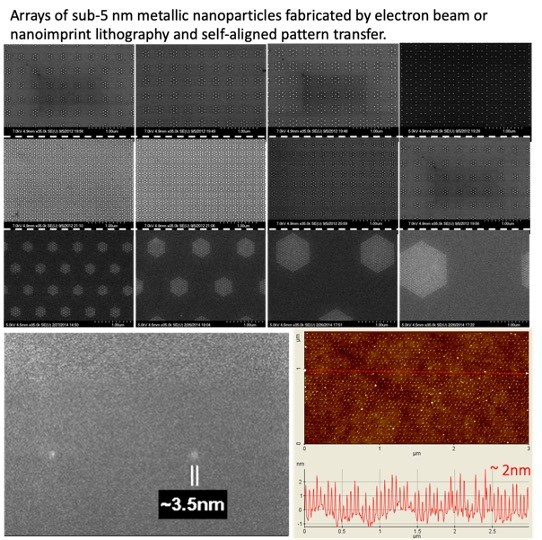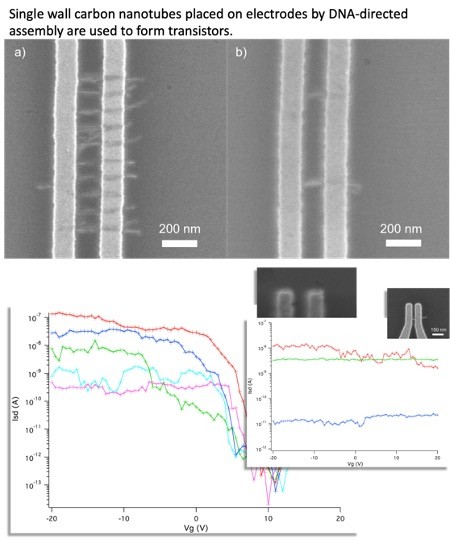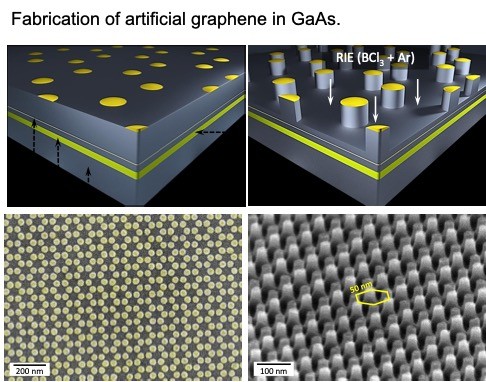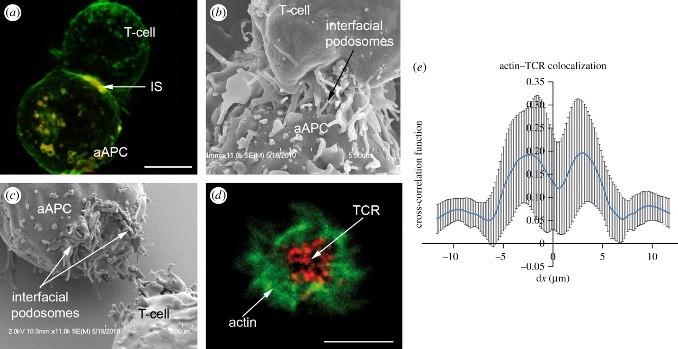The semiconductor industry has, for years, been seeking alternatives to traditional silicon scaling, which is the systematic reduction of transistor size that has fueled the incredible growth in computational speed and power, but which faces ultimate physical limits in the coming decade(s). New materials, such as semiconductor nanowires and carbon nanotubes, have outstanding electronic properties and have shown great promise for future applications, yet they face some significant challenges to implementation. Using our nanofabrication tools, we explore new ways of addressing some of these issues, particularly for carbon nanotubes.
- Biological and Biologically Inspired Assembly of Functional Nanostructures – As an example, we have been exploring new ways of forming carbon nanotube devices and circuits by organizing them on surfaces using a combination of nanolithgraphic patterning and DNA assembly.
-
Bioelectronics – Biomolecules possess a variety of unique properties that have attracted interest for their potential use as electronic materials. DNA, in particular, has been the subject of intense research for several decades, and there have been a range of claims about DNA’s ability to conduct electricity, with reports over the years that DNA is (a) metallic; (b) insulating; (c) semiconducting; and (d) superconducting. These conflicting reports are primarily a reflection of the difficulties encountered in measuring the charge transport properties of single molecules. Fortunately, there has been much progress in this area in recent years, and using techniques that we have developed, we are improving our ability to determine the true electronic properties of DNA.
Beyond creating platforms for measuring DNA conductance, we are also exploring some DNA variants that look very promising as molecular wires. Even more intriguing is the potential of these wires to organize themselves into complex topologies that might (someday) form the basis for a new type of signal processing.
Quantum Nanosystems



